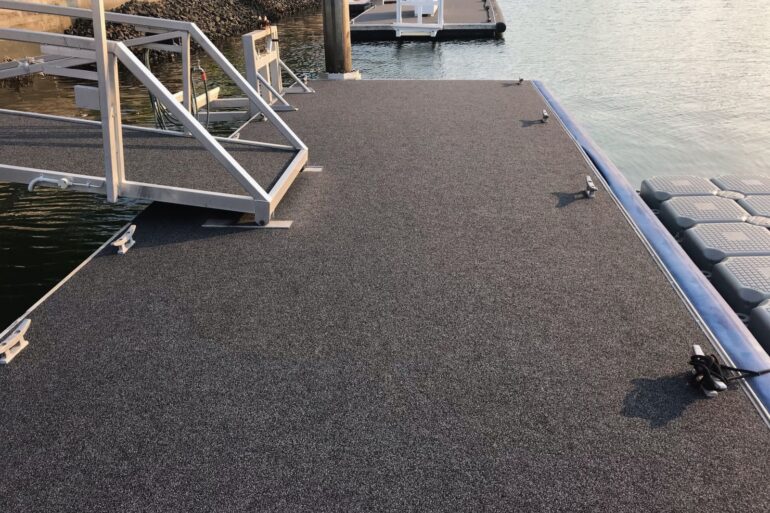
If you’re tossing up between a floating dock, such as a pontoon, or a jetty, then let me start by saying that a floating dock is by far the superior choice.
Installing a jetty is fairly rudimentary because the structural design is usually consistent. It’s merely a matter of getting the vertical load to support the horizontal load via piles that are drilled/jetted down into the seabed to the required embedment.
I guess the same can be said for some types of floating docks, such as piled pontoons. However, with multiple mooring options, floating docks provide more installation flexibility than jetties. And it’s this installation flexibility, paired with the reduced maintenance requirements, which leads me to believe that floating docks are the clear better choice.
To demonstrate the difference between a jetty and a floating dock, such as a pontoon, you need to understand the installation variances. So, let me explain how to install a floating dock using the three mooring options we offer here at Micks Marine Maintenance.
Floating Dock Mooring Options
If we look at the question ‘how to install a floating dock’, there isn’t one straight answer. This is because there are multiple mooring options at hand, and which one you choose depends not always on preference but on location and sea terrain.
There are numerous floating dock mooring options, but the main three – which are also the three we specialise in – are struts, cables and piles.
Floating Dock Strut Installation
The process of installing a floating dock with strut support is relatively straightforward. It involves installing a concrete mooring block onshore and connecting it alongside a gangway to the floating dock via an aluminium strut arm. Strut installations often use cable braces for additional support.
Floating Dock Cable Installation
The process of installing a floating dock with cable support is also fairly simple. It involves installing two concrete mooring blocks on-shore – one on either side of the gangway. But rather than connecting to the dock via a strut arm, it connects only with tensioned stainless steel cables (cable braces), which cross over one another to provide stability.
The dock itself can be made from either concrete or lightweight aluminium and is erected quickly in the installation process.
Floating Dock Pile Installation
Lastly is floating dock pile installation, and this is the most involved installation option of all. It is also the most robust. Unlike strut and cable installations, floating docks with pile installation don’t rely on concrete mooring blocks and some sort of connection to hold the dock in place. Rather, like jetties, floating dock pile installation relies on piles to firmly keep the floating dock in place.
Various pile options are also available to meet budget and environmental needs. There are In-situ PVC piles, spun concrete piles, timber and steel piles.
If you would like to know more about these mooring options or the installation process, visit our Pontoon Sales page.
Conclusion
Floating docks are a great alternative to a fixed jetty. While they provide the same functionality, they require lesser maintenance and provide more versatile mooring options. It’s these attributes that lead me to believe that floating docks are the clear better choice.
The difference between a jetty and a floating dock is most apparent in installation. Where jetties reply on vertical piles to support the horizontal load, floating docks offer multiple mooring options, including struts, cables and piles.
Floating dock strut installation uses sturt arms to hold the dock in place without vertical piles. Floating dock cable installation uses cables to hold the dock in place, again with no vertical piles. While floating dock pile installation is similar to jetties, whereby it uses piles to hold the dock in place; however, you have the added benefit of lower maintenance requirements.
If you like the sounds of the floating dock installation options, pick up the phone and give Micks Marine Maintenance a call at 0431 778 468.